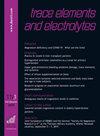La función de la frontera en la economía política de las plantaciones piñeras en Costa Rica / The function of borders in the political economy of Costa Rican pineapple plantations
IF 1
4区 生物学
Q4 BIOCHEMISTRY & MOLECULAR BIOLOGY
引用次数: 1
Abstract
Costa Rica es actualmente el mayor exportador de pina fresca en el mundo (Harvard’s Growth Lab 2020) y mas de la mitad de su produccion se ubica en la region fronteriza con Nicaragua. Con base en el trabajo etnografico realizado en dos comunidades costarricenses que se localizan en dicha zona, en este articulo argumentamos que la frontera entre ambos paises cumple tres funciones que la hacen fundamental para explicar tanto la expansion del cultivo como su ubicacion en esta region: 1) separa los espacios de produccion pinera de los espacios de reproduccion social de la fuerza de trabajo; 2) vulnera a los trabajadores migrantes nicaraguenses en Costa Rica, debido a su ingreso irregular al pais, y 3) dificulta la organizacion laboral, tanto por el alto nivel de movilidad de la fuerza de trabajo como por convertir conflictos de clase en conflictos entre naciones. Abstract: Costa Rica is the largest exporter of fresh pineapple in the world (Harvard’s Growth Lab 2020), with more than half of its production located in the border region with Nicaragua. Based on ethnographic research carried out in two Costa Rican communities located near the border, we argue in this article that the border line between both countries accomplishes three functions that are crucial to explain both the expansion of the crop and its location in this region: 1) it separates the spaces of pineapple production, of those of social reproduction of the labor force; 2) it renders migrant Nicaraguan workers in Costa Rica vulnerable, due to their irregular entry into the country; 3) it hinders labor organization, due to both the high mobility of the labor force, and by turning class struggle, into conflicts between nations. Keywords: borders; plantations; transborder labor; pineapple production; Central America. Resume : De nos jours, le Costa Rica est le plus grand exportateur d’ananas au monde (Harvard’s Growth Lab 2020), plus de la moitie de cette production est situee dans la zone frontaliere avec le Nicaragua. En nous basant sur le travail ethnographique effectue dans deux communautes costariciennes de cette region frontaliere, dans cet article nous demontrerons que la frontiere entre les deux pays remplit trois fonctions qui la rendent incontournable ayant pour but d’expliquer, d’une part l’expansion de l’exploitation agricole et d’autre part leur localisation dans cette region : 1) elle separe les espaces de production d’ananas comme ceux de la reproduction sociale de la force de travail ; 2) elle affaiblit les travailleurs migrants nicaraguayens au Costa Rica a cause de leur entree irreguliere au pays, 3) elle complique l’organisation du travail en raison de la grande mobilite des ouvriers et transforme les conflits de classe en conflit entre les nations. Mots-cles : frontiere ; plantations ; travail transfrontalier ; production d’ananas ; Amerique Centrale.本研究的目的是分析在墨西哥和拉丁美洲的拉丁美洲和加勒比地区,以及在拉丁美洲和加勒比地区的拉丁美洲和加勒比地区的拉丁美洲和加勒比地区的拉丁美洲和加勒比地区的拉丁美洲和加勒比地区的拉丁美洲和加勒比地区的拉丁美洲和加勒比地区的拉丁美洲和加勒比地区的拉丁美洲和加勒比地区的拉丁美洲和加勒比地区的拉丁美洲和加勒比地区。
哥斯达黎加目前是世界上最大的新鲜菠萝出口国(哈佛增长实验室2020),其一半以上的产量位于尼加拉瓜边境地区。根据工作etnografico哥斯达黎加在两个社区进行、该地区,而且在这篇认为两国之间的边界存在,发挥三个作用来解释的基本都安排种植的ubicacion在这个区域:(1)分隔的空间pinera reproduccion空间的社会劳动力;2)它侵犯了在哥斯达黎加的尼加拉瓜移民工人,因为他们非法进入该国;3)它阻碍了劳工组织,因为劳动力的高流动性,并将阶级冲突转变为国家之间的冲突。摘要:哥斯达黎加是世界上最大的新鲜菠萝出口国(哈佛增长实验室2020),其一半以上的产量位于与尼加拉瓜的边境地区。Based on的ethnographic research in two located near the border Rican海岸社区,我们争辩in this条both countries that the border line between accomplishes三关键职务that are both安排to explain the crop and its location in this region:(1) it separates spaces pineapple生产,这些社会和of the labour force;2)它使在哥斯达黎加的尼加拉瓜移徙工人易受伤害,因为他们非法进入该国;3)它阻碍了劳工组织,因为劳动力的高流动性和阶级斗争导致国家间的冲突。Keywords: borders;plantations;transborder工作;pineapple生产;美国中部。摘要:如今,哥斯达黎加是世界上最大的菠萝出口国(哈佛增长实验室2020),超过一半的菠萝产量位于尼加拉瓜边境地区。在《我们basant sur le travail ethnographique effectue dans deux communautes costariciennes我们领土的好处region frontaliere, cet条demontrerons之间frontiere les deux青体总署remplit duree三气的rendent incontournable ayant pour but 'expliquer d, l(底盘part 'expansion de l ' 'exploitation一份工作et d的part的定位中区域:(1)阻挡她espaces他们生产和'ananas如下ceux d sociale force travail;2)它削弱了在哥斯达黎加的尼加拉瓜移民工人,因为他们不定期进入该国;3)它使劳工组织复杂化,因为工人的高流动性,并将阶级冲突转变为国家之间的冲突。关键词:边界;plantations;跨境工作;菠萝生产;Amerique Centrale。
本文章由计算机程序翻译,如有差异,请以英文原文为准。
求助全文
约1分钟内获得全文
求助全文
来源期刊

Trace Elements and Electrolytes
生物-内分泌学与代谢
自引率
0.00%
发文量
17
审稿时长
>12 weeks
期刊介绍:
Trace elements and Electrolytes appears quarterly and publishes reviews and editorials, original papers, short communications, and reports on recent advances in the entire field of trace elements. Papers on experimental findings are accepted if they bear a close relationship to human diseases. Correspondence (letters to the editors) and current information including book announcements will also be published.
 求助内容:
求助内容: 应助结果提醒方式:
应助结果提醒方式:


